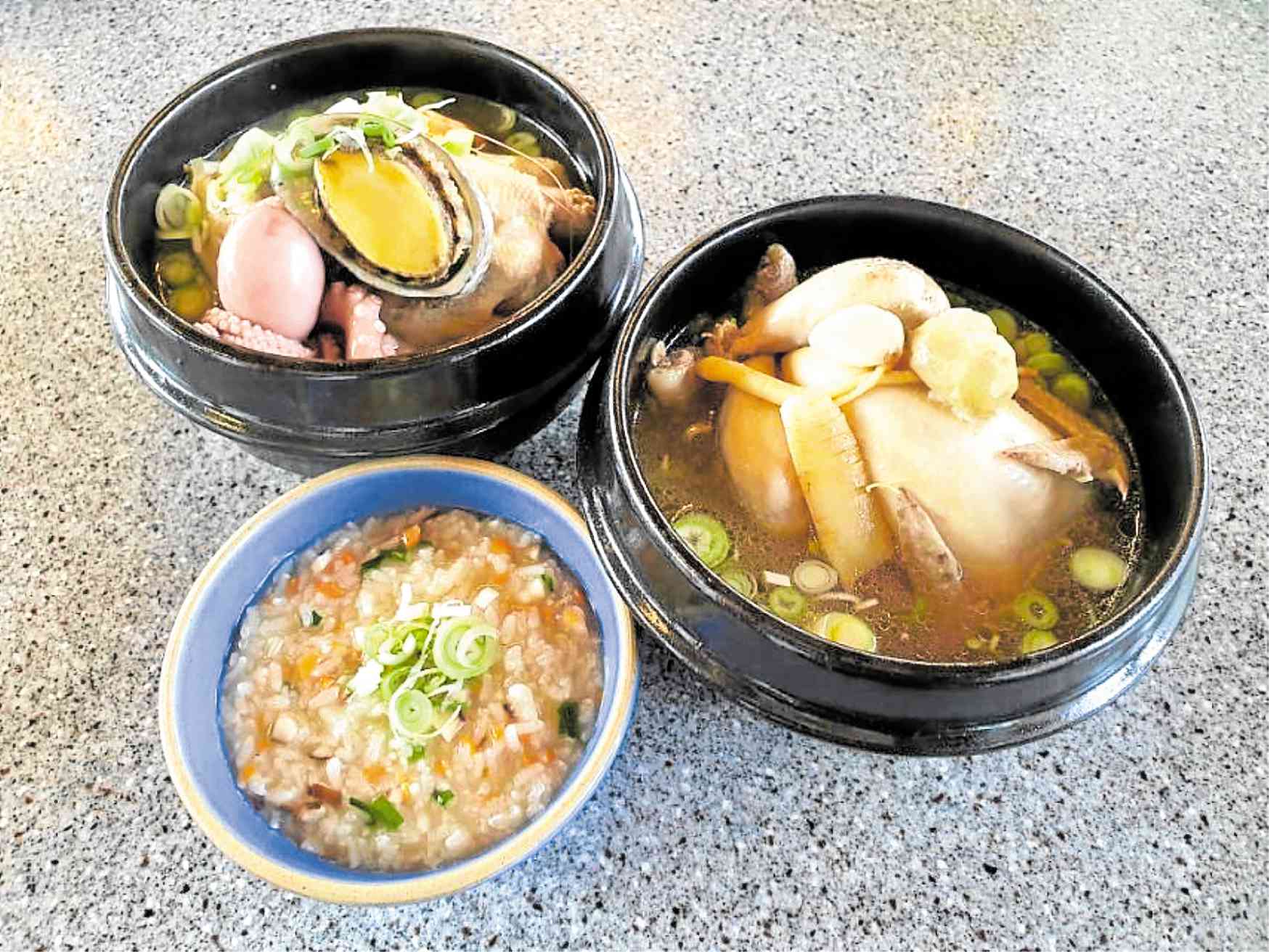
I am back from Kitchens of the World Seoul.
Kitchens of the World are culinary journeys I design in partnership with Rajah Travel, alongside colleagues and dear friends who are culinary professionals from all over the globe.
Here are recipes of some of the dishes we had on our trip. As I always say, I believe that learning a dish from the countries we visit makes the most lasting souvenirs.
We were fortunate to have been allowed to use the facilities of the Seoul K-Medi Center, a multipurpose cultural complex that was established to promote a better understanding of Korean traditional medicine.
The center is in the heart of Seoul’s Yangnyeong Herbal Medicine Market—a most appropriate venue to learn how samgyetang is done. Sam means ginseng; gye is chicken; tang, soup.
Korean food expert Ashley Hwang taught us all we needed to know about preparing the hearty chicken dish, famous for its healing benefits.
Ginseng gives energy and is beneficial to the body. It also combats fatigue, keeps us strong and healthy.
Samgyetang, Hwang added, gives you stamina.
Samgyetang
1 600-g young chicken
50 g Korean sticky rice
1 fresh ginseng root
1 clove garlic
Dried jujube
Chestnut, peeled
Stuff chicken with the following: 1 tbsp of sticky rice, ginseng root, 1 clove garlic, 1 chestnut, 1 jujube.
Secure the filling by making a slit on one side of the chicken thigh skin and inserting the other leg through it. You may also secure the cavity with a wooden pick then tie the legs of the chicken.
For the broth:
2 liters water
30 g hwang gi (milk vetch root)
30 g um namu (kalopanax)
50 g green onion or leeks
Bring water to a boil with hwang gi and um namu and green onions. Once the broth boils, add the chicken and cook for 45 minutes for spring chicken and 1 hour for larger ones.
Serve the chicken garnished with green onions. Salt is served on the side along with your choice of kimchi.
Variation: Our samgyetang at the K-Medi Center was made very special. To it, we added seafood. Doing so, they say, makes the skin radiant.
After the samgyetang was cooked, we added a couple of pieces of fresh abalone, small octopus and shrimp to the broth. It was simmered until the seafood was done. The chicken was served with the seafood.
We also made samgyetang porridge by straining the remaining broth, and to it we added soaked sticky rice, chopped leeks, carrots, onions. It was served when the rice was done.
In the Philippines, fresh ginseng isn’t found easily. However, the soup can still be prepared by using the samgyetang broth pack, available locally in Korean stores. The pack includes all the essential ingredients (hwang gi and um namu).
Lily Min, the food expert at the Korean Embassy in the Philippines, said that hwang gi has properties similar to ginseng, and um namu benefits the liver, is good for arthritis, inflammation, and gives energy.
However, without the ginseng, the dish is called dakbaeksuk—dak, chicken; baeksuk is cooked fish or meat without seasoning.
One of the best doenjang-jjigae (soybean stew) I’ve had was at chef David Yoon’s Asian Live Kitchen at the Seoul Intercontinental Coex.
He shared his recipe:
Seafood Doenjang Stew
(Good for one person)
50 g live abalone
50 g crab claw
30 g cuttlefish, sliced
40 g shrimp, peeled
10 g scallop
30 g black clam
10 g tofu, cubed
Vegetable ingredients
30 g zucchini, sliced into thin discs and cut into triangles
20 g onion, large dice
10 g green chili, sliced
40 g mushroom, shiitake or king
10 g enoki mushroom
20 g green onion, sliced
Doenjang broth (10 persons)
200 g dried anchovy
50 g cheongyang pepper (hot pepper)
6 g ginger
30 g dried kelp
2 g black peppercorns
27 g chili powder (coarse type)
60 g garlic
21 g beef powder
25 ml refined rice wine sake
23 g glutinous rice flour
440 g doenjang (bean paste)
2500 cc beef stock
For broth:
Combine all broth ingredients except anchovy and bring to a boil for 30 minutes.
In a dry pan, roast anchovies until fragrant. Add anchovies to broth and cook 10 minutes. Strain.
Transfer broth to a ddukbaegi (earthen cookware) approximately 1½ cups per ddukbaegi. One ddukbaegi is one serving.
Put ddukbaegi over fire and bring broth to a boil. Add vegetables and seafood and simmer for 10 minutes.
Serve garnished with spring onions.
For more recipes from Korea, watch out for the coming travel show “Kitchens of the World.”
Follow the columnist: iamreggieaspiras; reggieaspiras.com